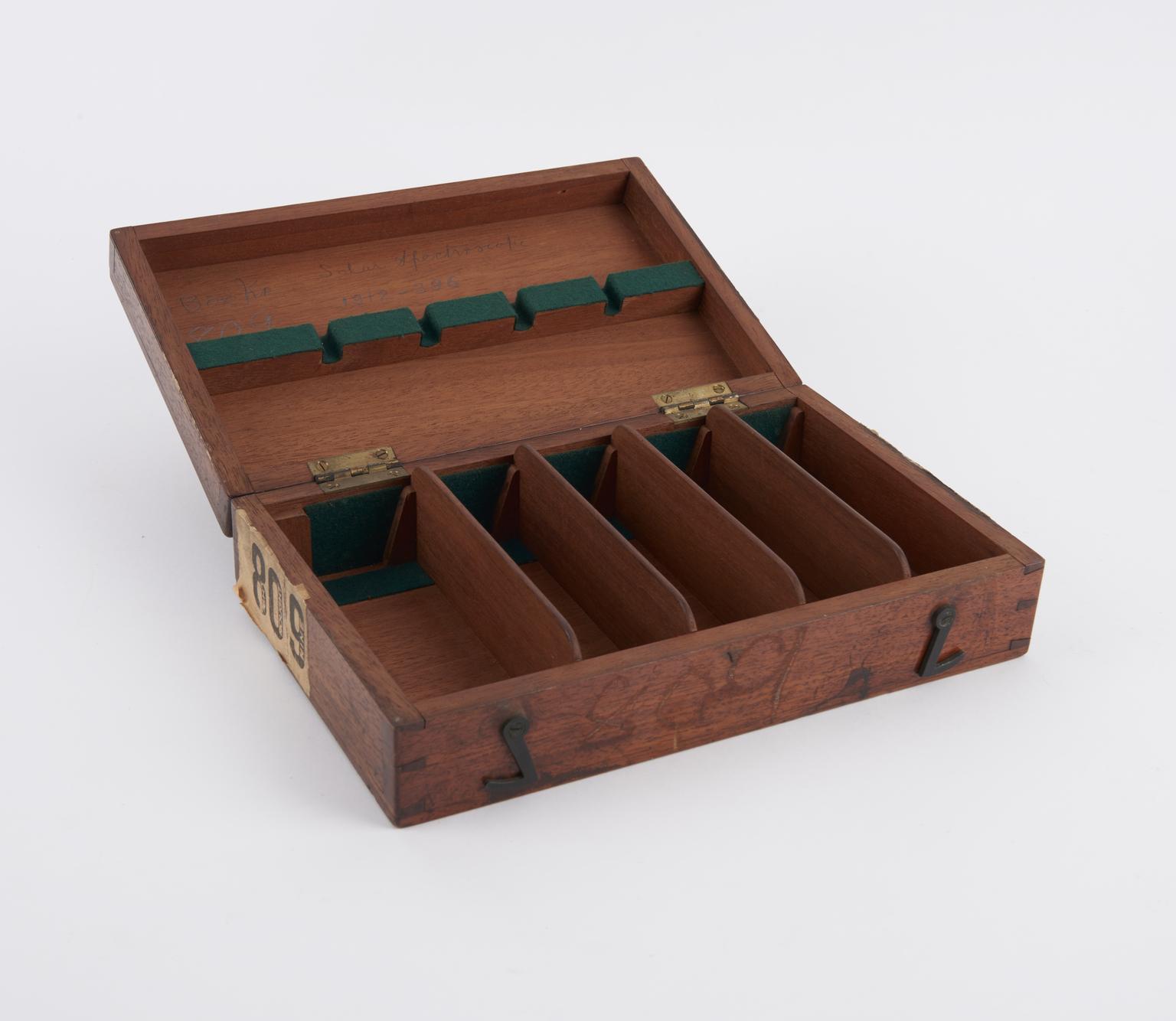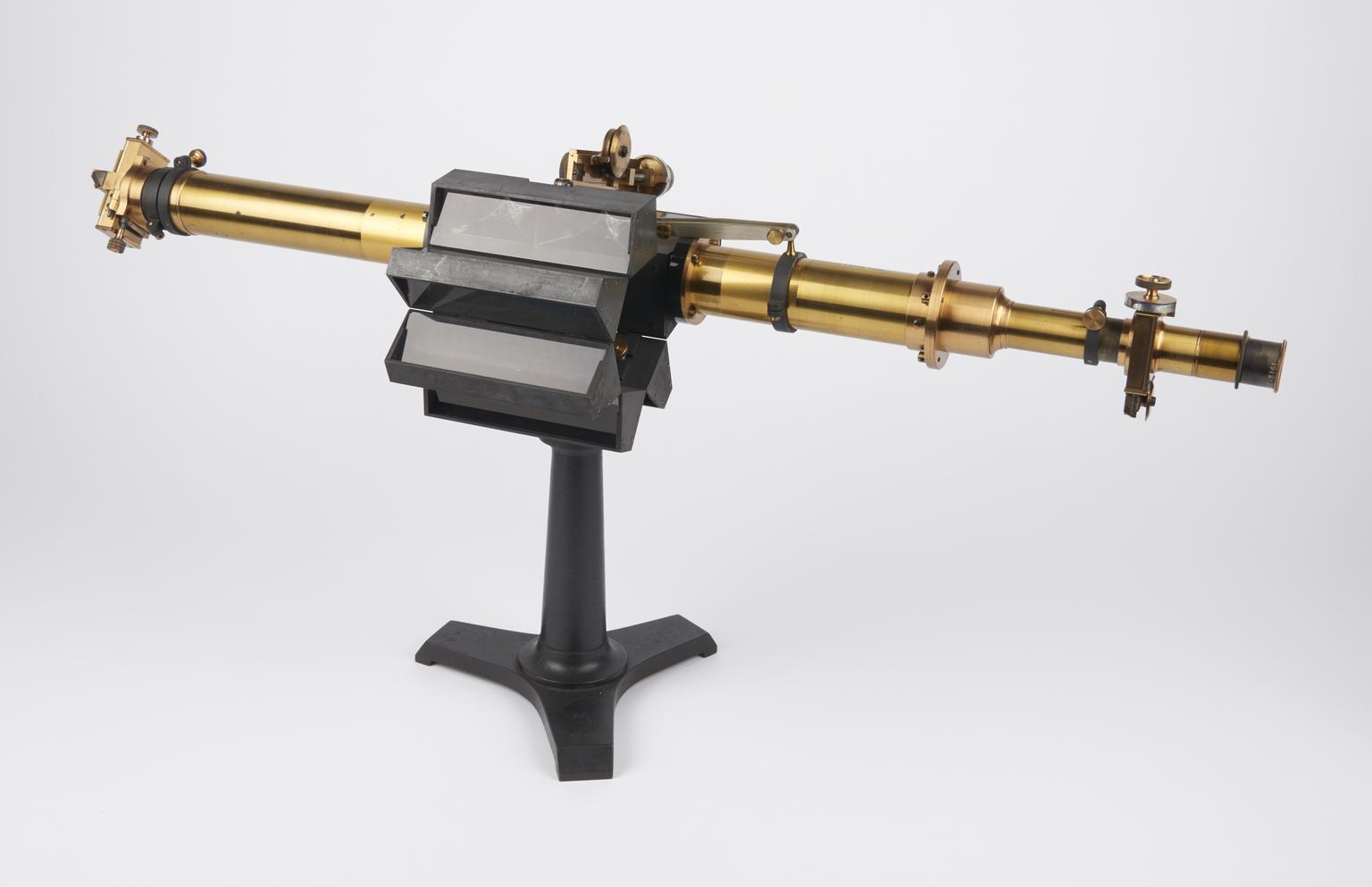Case for Solar spectroscope with stand by T. Cooke and Sons
Case for Solar spectroscope with stand by T. Cooke and Sons, York, England, 1881.
Solar spectroscope with stand and two mahogany boxes by T. Cooke and Sons, York, England, 1881. Used at the Solar Physics Observatory, South Kensington between 1881 and 1912. The set of prisms give a high dispersion equal to 20 prisms, by passing the light through the prisms train four times.
Dated to around 1881, this solar spectroscope was used until 1913 at the Solar Physics Observatory in South Kensington, London. Made by T. Cooke & Sons, York, the spectroscope was designed to produce highly detailed spectra of the Sun. When used on its stand, light from the Sun was fed into the instrument using a heliostat, an instrument with a clock-driven mirror. The spectroscope uses a set of five long glass prisms to disperse the Sun's light into a long spectrum. To improve its resolution, the light-path is folded so that it passes through each prism four times. This makes the instrument equivalent to a 20-prism spectroscope, but with far fewer optical components.
Case for Solar spectroscope with stand by T. Cooke and Sons, York, England, 1881.

Case for Solar spectroscope with stand by T. Cooke and Sons, York, England, 1881.

Solar spectroscope with stand by T. Cooke and Sons, York, England, 1881. Used at the Solar Physics Observatory, South Kensington between 1881 and 1912. The set of prisms give a high dispersion equal to 20 prisms, by passing the light through the prisms train four times.